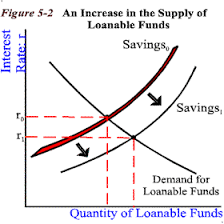Investment- We are redirecting resources, that you would consume now for the future.
Financial Asset- claims on property and income of the borrower
Financial Intermediaries- institution that channels funds from savers to borrowers.
Interest in relationship savers, saver is me, and institution is a bank, the bank invests.
3 Purposes for Financial Intermediaries
1. Share risk
-- Diversification- spreading out investment to reduce risk
2. Providing Information
--Stock-broker to advise you what to do to see
3. Liquidity
--Easily to convert to cash
--Returns- the money and inverses above and beyond the sum of money that was intentionally invested.
The higher the risk, the higher the investment bond.
Bonds
3 Components of a Bond
- Coupon rate
- Maturity
- Par Value
Bonds are Loans or IOUs that represent debt that the Gov't or a cooperation must repay to an invester
-Bonds are generally low risk investments
1. Coupon Rate
- the interest rate that a bond issuer will pay to a bond holder
2. Maturity
- the time at which payment to a bond holder is due
3. Par Value
- the amount that an investor pays to purchase a bond and that will be re payed to an investor at maturity
Yield- Annual rate of return on a bond of the bond were held to maturity
Bond you LOAN
Stocks you OWN













